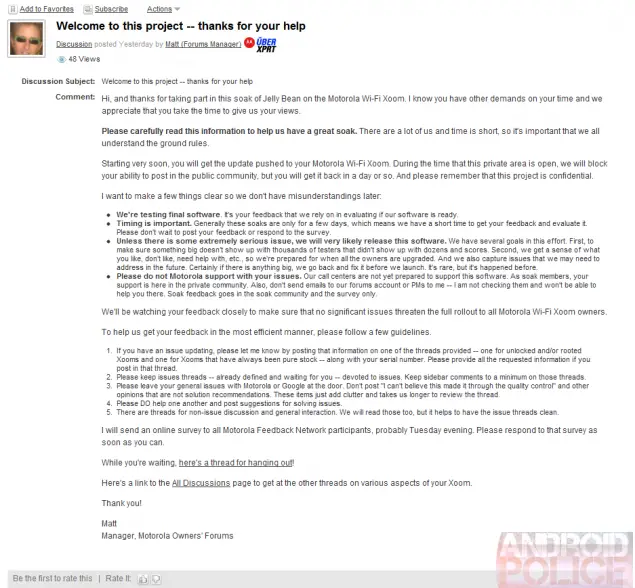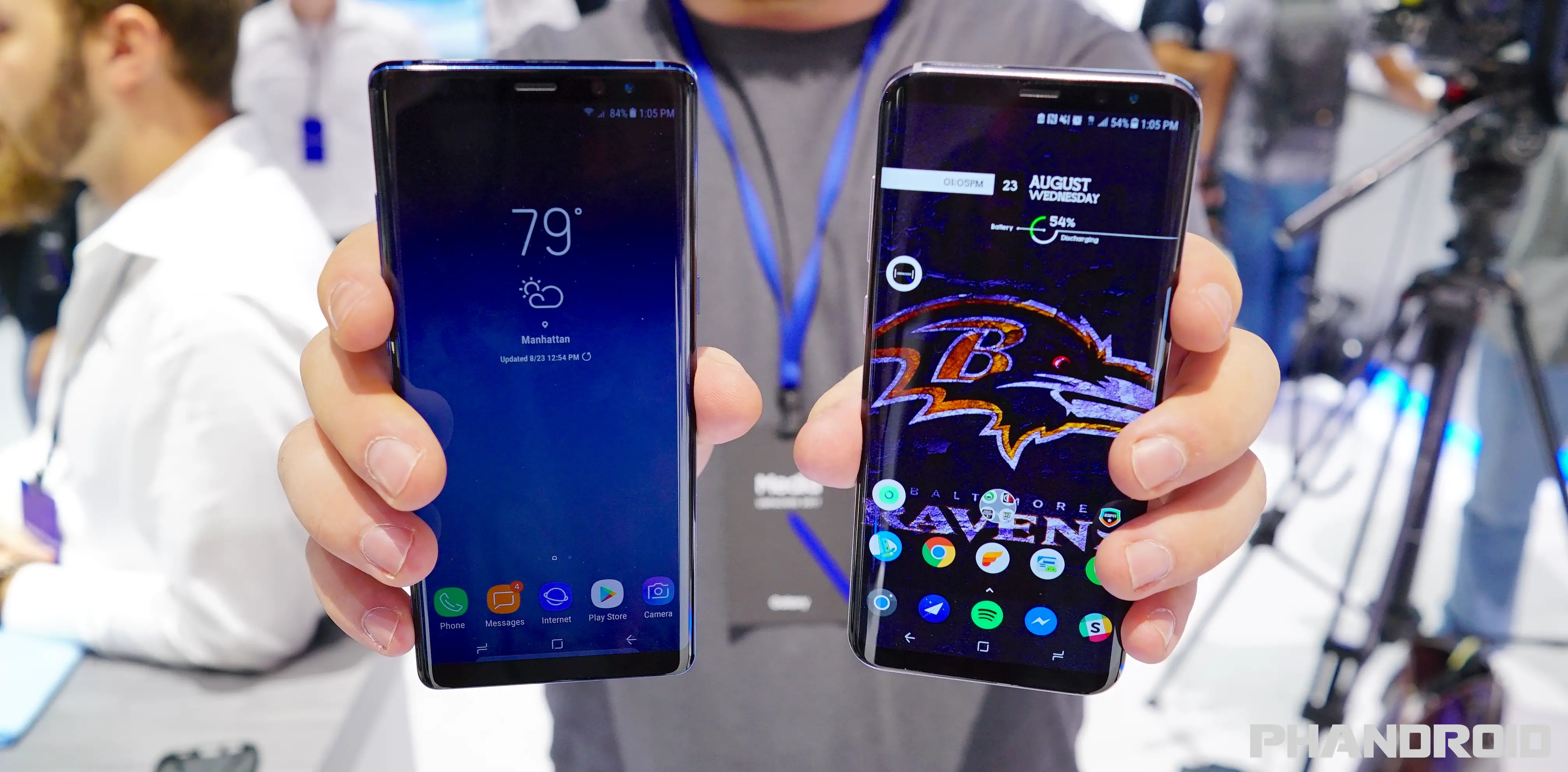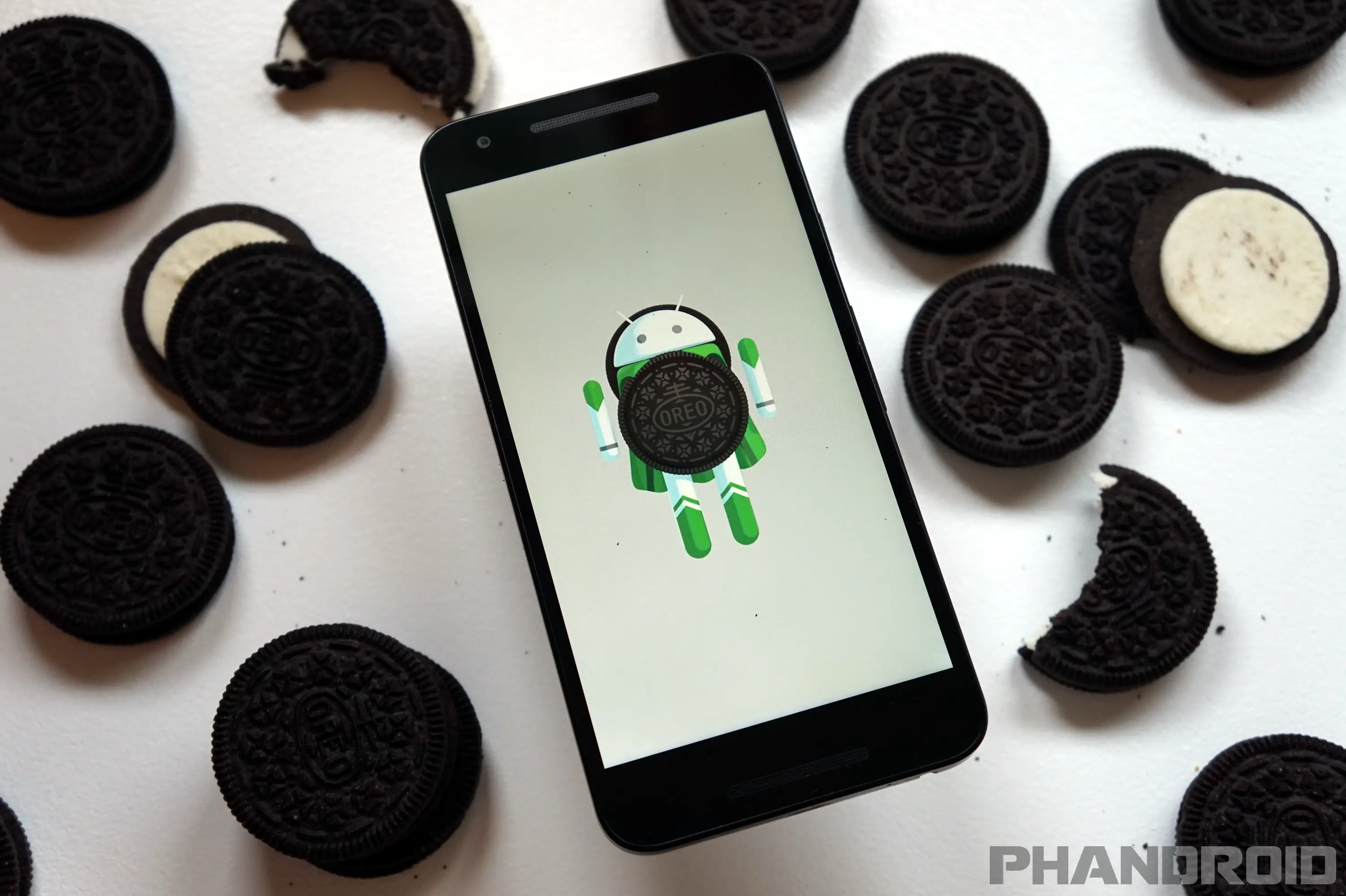Privileged Motorola Xoom (WiFi-only) owners who have joined up with the Motorola Feedback network are fetching their umbrellas. Why? Because it looks like Motorola is getting set to rain down some jelly beans up in this heezy. According to the exclusive forum, a soak test should be rolling out any minute and if all goes well, “regular” Xoom owners can expect the update en masse.
Of course, as so often is the case with devices on Verizon’s network, the LTE version of the Xoom could be waiting a little (lot) longer before they see Android 4.1 Jelly Bean. OTA updates have to go through Verizon’s rigorous testing process before they can send it out to their customers. Still, I guess now we can start thinking of the Xoom as an almost 10-inch Nexus tab having received Honeycomb, Ice Cream Sandwich and now Jelly Bean.
Alright, the soak test is officially ready to push out and a changelog has officially been given. This is what non-Feedback Network members (regular Xoom folk) can look forward to, providing the update doesn’t introduce any major bugs:
Android 4.1.1, Jelly Bean Software Update for the Motorola XOOM™ WIFI in the U.S.
Introduction – We are pleased to announce a new software update for the Motorola XOOM™ WIFI in the US. This Android 4.1.1 (JRO03H) software update includes numerous enhancements. Upgrade today for peak performance.
Who Can Use This Release – ALL Motorola XOOM U.S. WIFI users.
After downloading and installing the software release, you will notice:
- Improved User Interface and Response – Android 4.1.1, Jelly Bean, is the fastest and smoothest version of Android yet. Moving between home screens and switching between apps is effortless, like turning pages in a book. Jelly Bean makes your Android device even more responsive by boosting your device’s CPU instantly when you touch the screen, and turns it down when you don’t need it to improve battery life.
- Expandable, Actionable Notifications – Now you can take action directly from the notifications shade. And because the notifications are expandable, you can get an even deeper look into the things that matter most, like multiple emails or photos on Google+.
- Widgets work like magic – With Jelly Bean it’s now even easier to personalize your home screen. As you place widgets on the screen, everything else automatically moves to make room. When they’re too big, widgets resize on their own. Interacting with your favorite apps and customizing your home screen has never been easier. Seamlessly view and share photos – Just swipe over from camera to filmstrip view to instantly view the photos you just took, and quickly swipe away the ones you don’t like. Now sharing–and bragging–are a breeze.
- A Smarter Keyboard – Android’s dictionaries are now more accurate, more relevant. The language model in Jelly Bean adapts over time, and the keyboard even guesses what the next word will be before you’ve started typing it.
- Improved Text-to-Speech Capability – With improved text-to-speech capabilities, voice typing on Android is even better; it works even when you don’t have a data connection.
- Accessibility – With Jelly Bean, blind users can use ‘Gesture Mode’ to reliably navigate the UI using touch and swipe gestures in combination with speech output. Jelly Bean also adds support for accessibility plugins to enable external Braille input and output devices via USB and Bluetooth.
- Voice Search – Android lets you search the web with your voice, and it’s convenient for getting quick answers on the fly. It speaks back to you and is powered by the Knowledge Graph, bringing you a precise answer if it knows it, and precisely ranked search results, so you can always find out more.
- A new look for Search – Android has search at its core. With Jelly Bean, a redesigned experience uses the power of the Knowledge Graph to show you search results in a richer way. It’s easier to quickly get answers and explore and browse search results.
[AndroidPolice | AndroidCentral]










Giggity!
I love owning a GED
What’s a GED?
Google experience device
the Xoom was not a nexus device although it might as well have been. Google experience device is a device such as the nexus line that is updated and supported directly from google.
The Xoom IS a GED though. It may not have the Nexus branding but it is a GED just like the D1. It predates the Nexus tablet line. And will be supported as such until the hardware is too old to be supported. Seeing as this is the 3rd major OS change for the device, i would say it is doing pretty well and unless there is a major paradigm shift, I don’t see why it won’t see “Key Lime Pie”. :)
Purchased on 27-March-2011… one year plus and this thing is *still* a beast. Sweet!
Can’t wait. Still loving my Xoom. By the way, what’s a “heezy”?